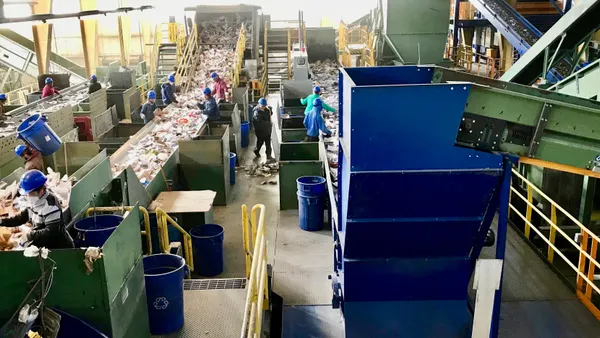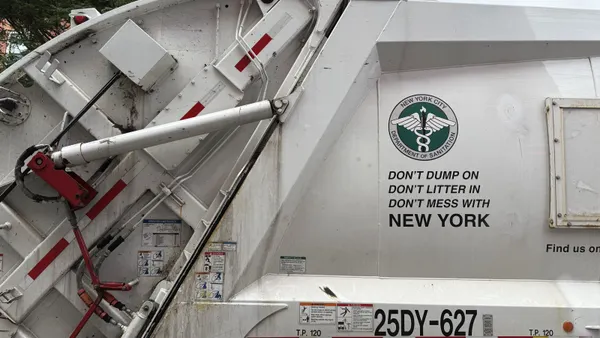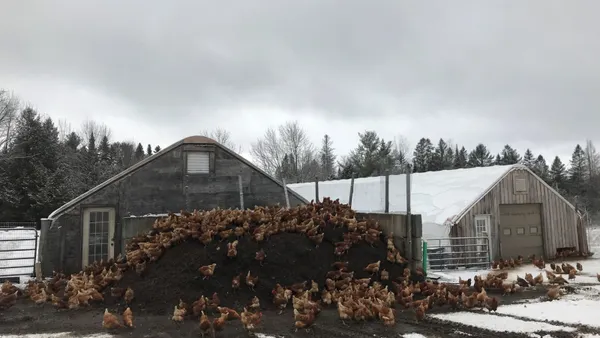Dive Brief:
- The Foodservice Packaging Institute's Paper Recovery Alliance/Plastics Recovery Group has released the results of a study that examined existing literature on the role of compostable foodservice packaging (FSP) made from both paper and plastic in increasing organics diversion. Based on multiple tests and anecdotes, the study concluded that the presence of compostable FSP can lead to higher organics diversion rates and lower contamination rates with enough consumer education and outreach.
- Many examples were drawn from cafeterias and large venues such as stadiums. The composter AgRecycle reported notably higher organics diversion rates in cafeterias that used compostable FSP as opposed to standard FSP. Multiple stadiums also reported an increase in diversion when compostable FSP was used.
- Many of these stadiums also noted that post-sorting was still required, but cost-effective, in order to avoid contamination and ensure cleaner material streams. Arizona State University saw encouraging results in reducing contamination rates by experimenting with signs and temporarily stationing employees to act as "bin guards."
Dive Insight:
As organics diversion programs become more widespread, particularly in commercial settings, compostable products have proven challenging for some recyclers. However the market is clearly growing and industry groups such as the FPI have been working to provide guidance to the operators of composting and anaerobic digestion facilities on how to deal with these materials.
According to the study, one of the largest gaps in available research is understanding how compostable FSP stacks up against natural carbon sources used in composting such as yard trimmings, wood shavings and paper. More data is needed on how the two sources compare in terms of carbon to nitrogen ratios, moisture content, composting rates and final properties. The FPI's working group plans to conduct a new study on these subjects this year.
The underlying question in all of this is whether consumers understand how and why they should be diverting compostable products. Some of the anecdotal evidence in this study indicates that the presence of these products can make people think more about diverting other types of organic waste as well, though the variety of materials used in some of this packaging can still make that complicated. New programs such as the Sustainable Packaging Coalition's How2Compost label may help make this more of a mainstream practice in the coming years.









